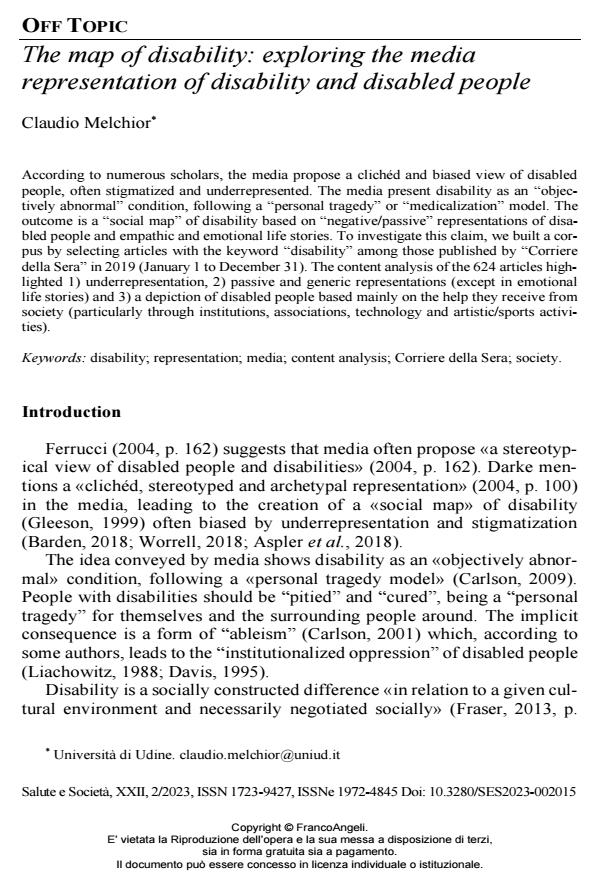The map of disability: exploring the media representation of disability and disabled people
Titolo Rivista SALUTE E SOCIETÀ
Autori/Curatori Claudio Melchior
Anno di pubblicazione 2023 Fascicolo 2023/2
Lingua Inglese Numero pagine 16 P. 165-180 Dimensione file 550 KB
DOI 10.3280/SES2023-002015
Il DOI è il codice a barre della proprietà intellettuale: per saperne di più
clicca qui
Qui sotto puoi vedere in anteprima la prima pagina di questo articolo.
Se questo articolo ti interessa, lo puoi acquistare (e scaricare in formato pdf) seguendo le facili indicazioni per acquistare il download credit. Acquista Download Credits per scaricare questo Articolo in formato PDF

FrancoAngeli è membro della Publishers International Linking Association, Inc (PILA)associazione indipendente e non profit per facilitare (attraverso i servizi tecnologici implementati da CrossRef.org) l’accesso degli studiosi ai contenuti digitali nelle pubblicazioni professionali e scientifiche
According to numerous scholars, the media propose a clichéd and biased view of disabled people, often stigmatized and underrepresented. The media present disability as an "objectively abnormal" condition, following a "personal tragedy" or "medicalization" model. The outcome is a "social map" of disability based on "negative/passive" representations of disabled people and empathic and emotional life stories. To investigate this claim, we built a corpus by select-ing articles with the keyword "disability" among those published by "Corriere della Sera" in 2019 (January 1 to December 31). The content analysis of the 624 articles highlighted 1) un-derrepresentation, 2) passive and generic representations (except in emotional life stories) and 3) a depiction of disabled people based mainly on the help they receive from society (particu-larly through institutions, associations, technology and artistic/sports activities).
Parole chiave:disability; representation; media; content analysis; Corriere della Sera; society.
Claudio Melchior, The map of disability: exploring the media representation of disability and disabled people in "SALUTE E SOCIETÀ" 2/2023, pp 165-180, DOI: 10.3280/SES2023-002015